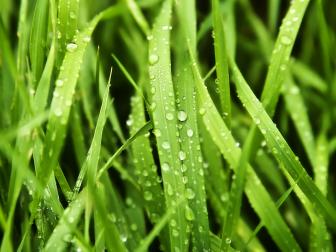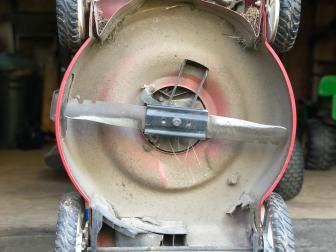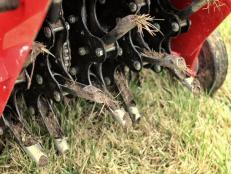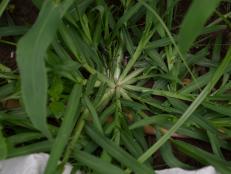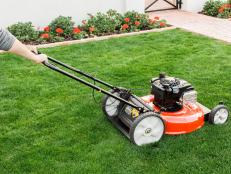How to Stripe a Lawn
Lawn striping can create a dramatic effect and add serious curb appeal to your home. Learn how to stripe a lawn with these tips.

Shutterstock/romakoma

Baseball fields look amazing at night. There’s the contrast of the bright, white chalk lines against the dark infield dirt. But it's the extremely cool lawn stripes that really make a field pop under the lights.
It might take some practice before you’re skilled enough to create mowing masterpieces like those at some major league parks. But outfitting your lawn with a set of simple stripes isn’t that hard, and it’s good for your lawn, too.

How Does Lawn Striping Work?
Light reflecting off blades of grass bent in different directions create the dark and light patterns — grass blades bent toward you will appear darker than gass blades bent away from you.
This is the same light effect you’ll notice after you walk across thick carpet or run your hand back and forth across a suede jacket. The grass most often is bent down by the pressure applied by rollers attached to the back of a lawn mower. The pros use reel mowers with multiple rollers.
You can buy striping kits for your mower, or, if you’re handy and want to save some bucks, you may want to check out these instructions, then try to make one yourself with a little bit of PVC.
Tips on How to Mow Stripes
Atlanta Braves Senior Field Director Ed Mangan and his staff are responsible for the beauty and health of the field at Truist Park. The real value in striping, says Mangan, is that it encourages healthy grass growth. Mowing in one direction too often can actually cause the taller grass to bend over and shield the grass below from the sun, which over time could kill it. Plus, you’ll get those ugly tire marks that eventually will become embedded in your lawn.
5 Reasons Not to Mow Wet Grass
Learn why mowing a wet lawn isn't a good idea, plus get tips on what you should do if you absolutely must cut the grass.
So, vary your striping direction often, suggests Mangan, who adds that you also can get good striping results by using brooms, squeegees or even throwing down buckets of water.
A few more tips: Decide on your stripe pattern before you start mowing your lawn. And bigger grass blades create better stripes.
Best Grass Types for Striping a Lawn
Not all grass types stripe equally. Warm-season grasses like Bermuda don’t hold stripes as well because there’s more stem and less blade. Cool-season grasses, such as fescue, are the best lawn palette, which Mangan says is why some of the more elaborate striping designs can be seen at ballparks in the North.
Whether you’re into pinstriping your lawn or not, a good cut begins with a sharp mower blade, says Mangan.
3 Easy (and Safe!) Ways to Sharpen Your Lawn Mower Blade
A well-maintained lawn mower will keep your lawn looking fresh, and it starts with sharpened blades. We show you how to do this easily and safely.







